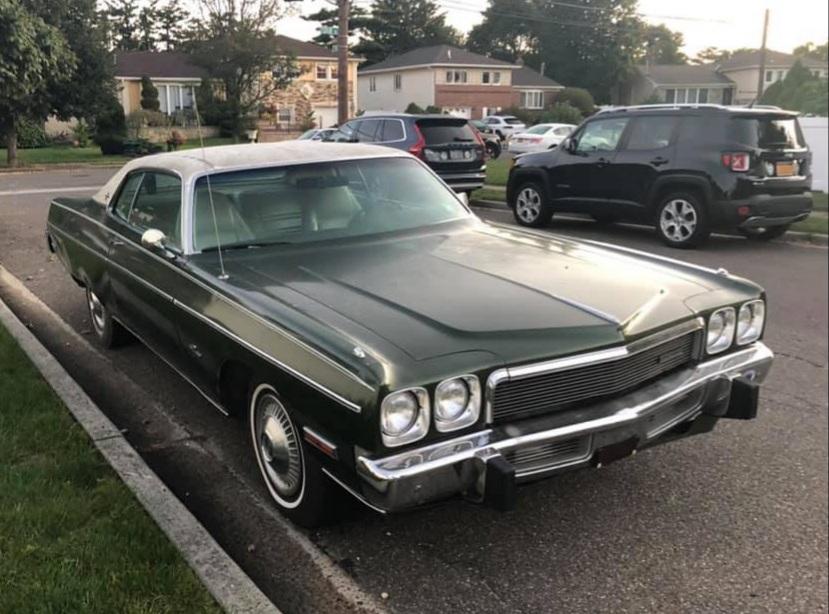
As has frequently been the case this spring and summer, I found myself out on the deck after work, with a gin and tonic, looking at old, gas-guzzling Broughamage online. Today’s subject is a top of the line Fury Gran Coupe.

The Gran Coupe and Gran Sedan were the most heavily chromed and priciest full sized Plymouths since the VIP, meant to compete with the Caprice and LTD, disappeared after the 1969 model year.
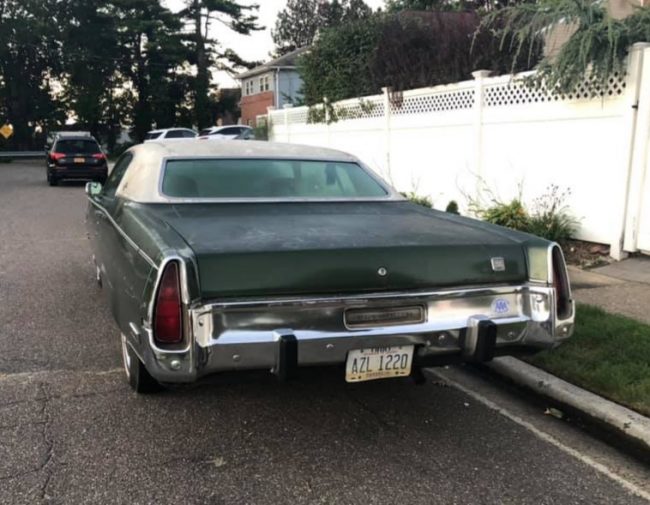
1973 was the last year for the ‘fuselage’ Plymouths, starting in 1974 an all new Fury would appear just in time for Gas Crisis I.
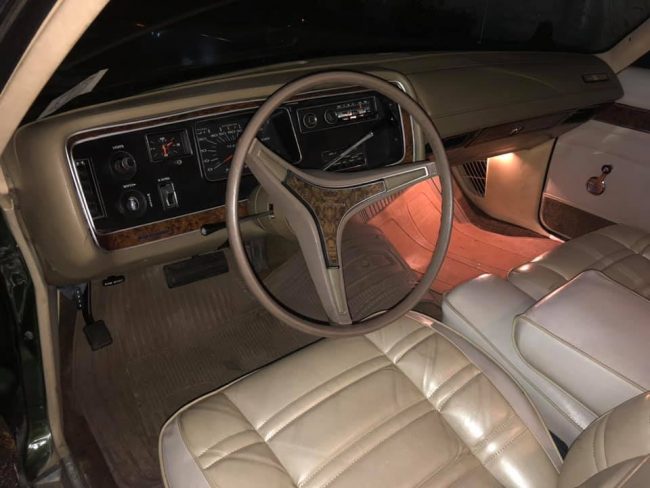
Anyway, I always liked these, their cheaper Fury I and Fury II brethren were commonly seen in ’70s TV shows and movies, from The Odd Couple to The French Connection.
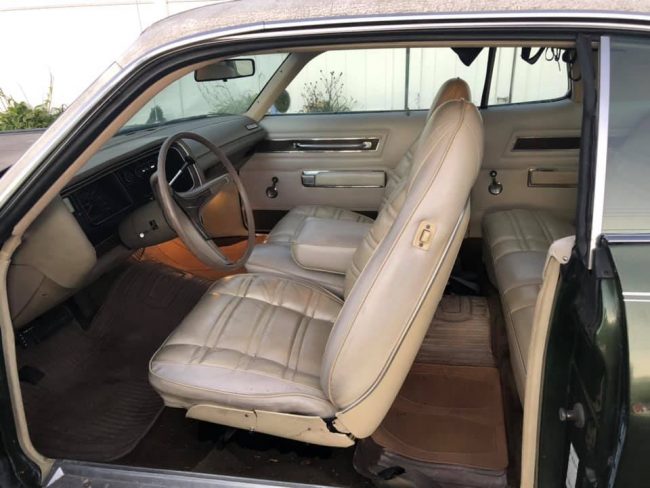
This example is one of 18,127 Fury Gran Coupes built for the year. Base price was $4,064 and they rode a 120-inch wheelbase, same as the sedans. Wagons got a 122″ span.
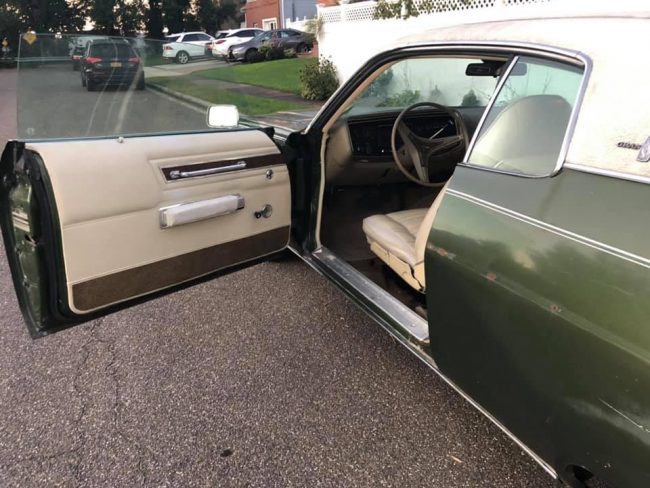
This one is pretty sharp in forest green with a white top and tan interior. Available for 4200 at the time of this writing in Hicksville, NY, it’s a survivor for sure.

I enjoyed gawking at its massive quarter panels and ample wood grained trim inside. If you’re so inclined, seek the seller out. And now I think I need a refill. *BARTENDER*
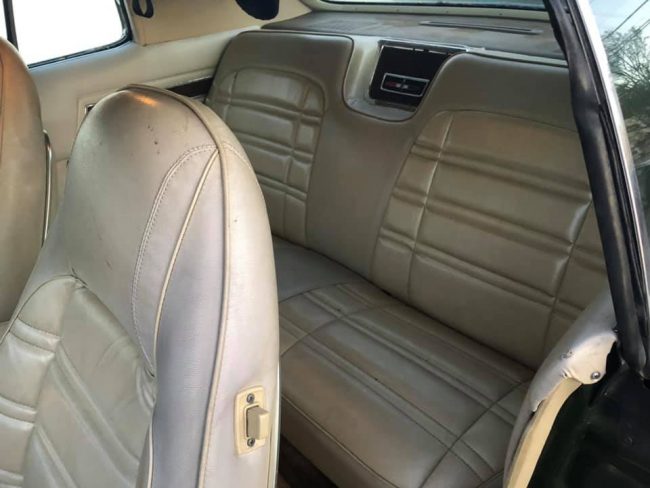







4 Comments
I always thought the styling on these was vaguely Oldsmochevy…..borrowing from GM here and there, this is nicely equipped for a Plymouth.
Because they were so damn BIG I didn’t like these when new but plenty of friends did and they rode nicely and once you tuned up the suspension they actually held the road pretty well .
Gas hogs though .
Good to see a nice survivor, I bet there’s a good trim on some rust bucket sitting on the Mid – West for it .
I had a 1968 (? ’69 ?) Fury III coupe with “hy po 383” according to the build tag, in 1976 it was just one more old unwanted Plymouth but it too was a nice car that ran very strongly .
-Nate
That “prow” power bulge on the hood was first used on the ’70 Dodge Coronet. Although I liked that car and this one, it was not a feature that caught on with the general public. How was the build quality on these?
BlueovalDave,
Your question on build quality. First the drive train was very sturdy. The 318-383-400-440’s were great motors and the auto transmission was built to take the load. However Plymouth was the low priced leader for a reason. First and foremost, sound insolation was little to non-existant. One of the first things to make noise was the large front windows. That huge piece of glass would get loose and when it was rolled down would rattle inside the door. Interior trim was a second item to wear out, likewise the vinyl seats would tend to rip at the seams with heavy use. Last but not least “RUST” if you grew up in the upper midwest or the mid-south these cars would begin to rust after their first winter of exposure to rock salt. One of the leading reasons that the feds started to require the car companies to offer rust warrentys was the entry level priced cars from the big three all rusted badly. I am supprise this example is in such good shape. Overall these cars were good if they were maintained and problems were fixed as soon as they appeard. However, I would gues that the vast majority of Furys built were the Fury 1’s which were the fleet cars. The West Virginia and Virginia State Police had these as their go to curse from at least 1966 to 1976, and I am sure other states and localities did to. The Dodges were a few hundred dollars more and they also sold a lot of base cars to police and state agencies also. You could not get a less expensive full size car and back then all goverment commerical purchases were lowest price technically acceptable. Also you could not beat a Fury 1 or Dodge Polara with a 440 for stright line get up and go, now turns were a different issue. Hope this answers your question…